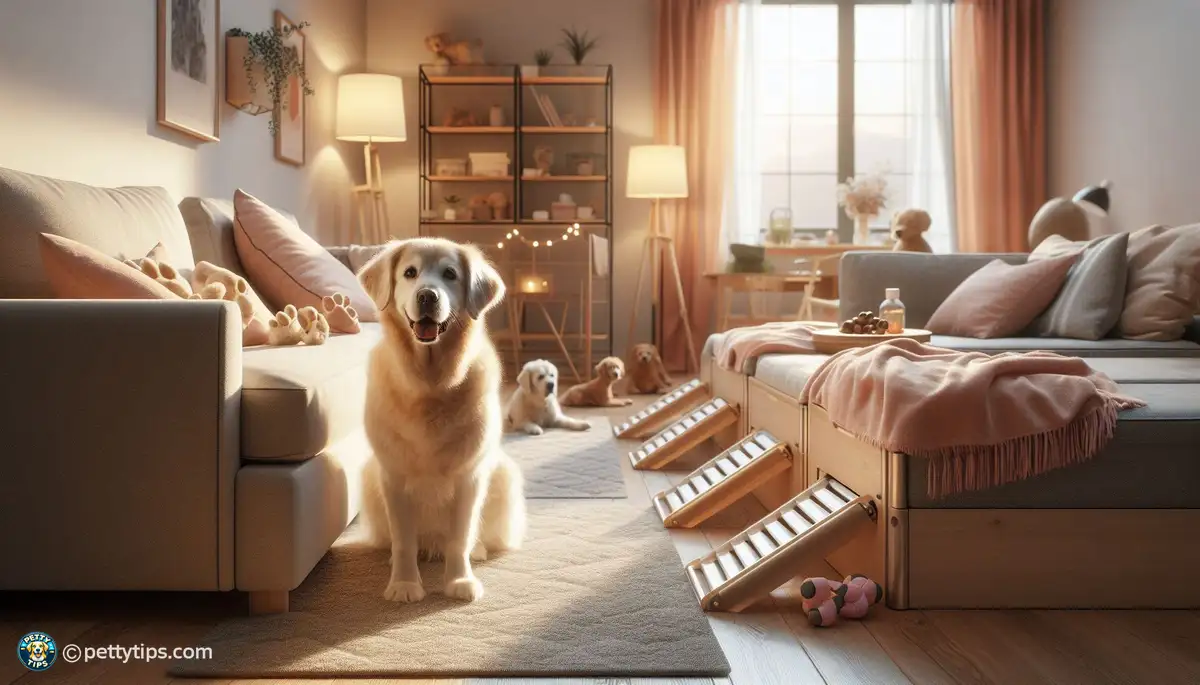
Establishing Leadership: Tips for Becoming Your Dogs Pack Leader
Samara Jeanbaptiste - Sep 27, 2024 - 6 min read


As our beloved canine companions grow older, they often experience various changes in their bodies and behaviors. It's crucial for pet parents to recognize these signs of aging so they can provide the appropriate care and support for their furry friends. One common sign is a decrease in energy levels and mobility. senior dogs may also develop arthritis or other joint issues, which can affect their ability to move comfortably. Additionally, you might notice changes in their appetite, sleep patterns, or even cognitive function. By understanding these signs, you can better address your aging dog's needs and make necessary adjustments to your home environment.
Once you've identified that your furry friend is entering their golden years, it's essential to prioritize their comfort and well-being. One way to do this is by creating cozy and accessible resting areas throughout your home. Senior dogs may have difficulty climbing onto high surfaces like beds or couches, so consider providing them with a soft, supportive dog bed that's easy for them to access. You can also add nonslip rugs or mats to help prevent slips and falls, especially on slippery surfaces like hardwood or tile floors. Additionally, placing their food and water bowls at a comfortable height can make mealtime more enjoyable for your aging pup.
As dogs age, they often benefit from having a consistent daily routine. This includes regular feeding times, exercise routines, and bathroom breaks. Establishing a predictable schedule can help reduce stress and anxiety for your senior dog, as well as make it easier for them to navigate their environment. Try to stick to the same routine as much as possible, but also be flexible and willing to adjust as your dog's needs change over time. Pay attention to their behavior and adjust their routine accordingly to ensure they remain happy and comfortable in their senior years.
Just like with young puppies, it's essential to puppy-proof your home for your aging canine companion. Take a close look around your living space and identify any potential hazards that could pose a risk to your senior dog's safety. This includes removing or securing loose cords, tucking away small objects that they could choke on, and blocking off access to areas where they could get stuck or injured. Keep in mind that senior dogs may not be as agile or aware as they once were, so it's crucial to take extra precautions to prevent accidents and injuries.
As dogs age, their vision may decline, making it more challenging for them to see in dimly lit areas. To help your senior dog navigate your home safely, make sure there's adequate lighting throughout your living space, especially in areas they frequent the most. Consider installing night lights or motion-activated lights in hallways, staircases, and other areas where visibility may be limited. This will not only help prevent accidents but also provide your aging pup with added comfort and security as they move around your home.
Senior dogs may struggle with stairs or high thresholds, making it difficult for them to move around freely. To make your home more accessible for your aging canine companion, consider installing ramps or pet stairs to help them navigate elevation changes more easily. This is especially important if your home has multiple levels or if your dog enjoys spending time outdoors in your yard. By providing them with alternative ways to move around, you can help reduce strain on their joints and ensure they can continue to enjoy their favorite activities without difficulty.
Arthritis and other joint issues are common ailments among senior dogs, causing discomfort and limiting their mobility. To alleviate their pain and support their joint health, consider investing in orthopedic bedding and furniture designed specifically for aging pets. Orthopedic dog beds provide extra cushioning and support for sore joints, helping your senior dog rest more comfortably throughout the night. You can also look for orthopedic ramps or steps to help them access higher surfaces with ease, reducing strain on their joints and minimizing the risk of injury.
While regular exercise is essential for dogs of all ages, it's crucial to tailor your senior dog's exercise routine to their individual needs and limitations. Low-impact activities like short walks, swimming, or gentle stretching exercises can help maintain their mobility and muscle strength without putting undue stress on their joints. Be mindful of their energy levels and any signs of discomfort during exercise, and adjust accordingly. Remember that consistency is key, so aim for short but frequent exercise sessions to keep your aging pup active and healthy.
In addition to conventional treatments, there are various alternative therapies available to help manage joint pain and improve mobility in senior dogs. Acupuncture, massage therapy, hydrotherapy, and chiropractic care are just a few examples of complementary approaches that may benefit aging canine companions. Consult with your veterinarian to explore these options and determine which ones may be suitable for your furry friend. Integrating alternative therapies into your senior dog's care routine can provide additional relief from discomfort and contribute to their overall well-being in their golden years.